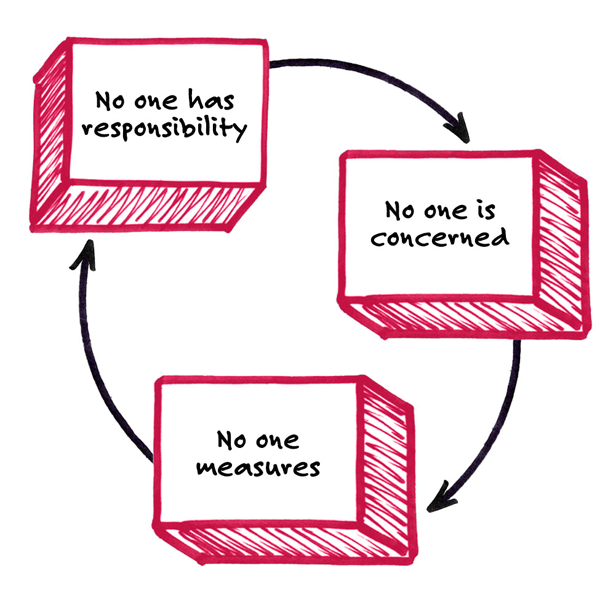As we were preparing the 4th edition of The Six Disciplines of Breakthrough Learning (due out in May https://www.amazon.com//dp/1394285396/ref=sr_1_3 ) we reviewed the literature on learning transfer and application.
We noticed that the problem has been discussed in the learning literature for more than 60 years, since back in 1957 when Mosel pointed to “mounting evidence that shows that very often the training makes little or no difference in job behavior” (Personnel 34(3):56–64).

Figure 1: The vicious cycle that undermines learning transfer and application on the job.
That got us thinking: Why is learning transfer still a problem? We concluded that there are three main contributors that together form a vicious cycle (Figure 1):
- No one is concerned.
- No one tracks learning transfer.
- No one owns it.
The root cause of the learning transfer problem is that no one is sufficiently concerned to make it a priority to fix it; or it simply is not recognized as a problem, or at least not one worthy of senior management’s attention. That is surprising, given the cost of learning scrap is billions of dollars annually. Perhaps that is because lack of transfer is a hidden cost, one that is not as obvious as a product recall or an industrial accident. As learning professionals, we should take the initiative to bring the magnitude of the problem to management’s attention because we have the most to gain. Why? Because when people attend training and learn new skills but never put them to work in a way that improves performance, management concludes that “the training failed” and we get the blame even though the real problem was the lack of transfer.
The second reason that suboptimal learning transfer continues to waste corporate resources is that no one tracks it. You cannot improve a performance metric unless it is measured and followed. As Tenner and DeToro pointed out in Process Redesign: “The absence of measurement limits an organization’s ability to evaluate the effects of changes and therefore precludes systematic improvement.” That is why more and more learning measurement gurus (for example, Leone, Thalheimer, Just, and others) are encouraging learning professionals to include an assessment of transfer as part of the evaluation of learning, since it can literally make or break training’s success.
The third element of the self-reinforcing cycle is that no one has responsibility for transfer effectiveness. In well-run organizations, there are clear lines of responsibility and accountability for business functions like sales, marketing, production, and customer service. But no one has accountability for ensuring that learning gets used on the job. Business managers assume that the training department is solely responsible for the effectiveness of training; they do not appreciate the essential role that they have in ensuring its application. Learning professionals perceive on-the-job application as outside their sphere of influence and accountability. The result is that learning transfer falls into a black hole in which no one has clear responsibility or accountability for its success. The reality is that both L&D and line management co-own and are co-responsible for the success or failure of every learning initiative.
How do we break the cycle to ensure that all the investment and work that goes into a learning initiative pays a return? We think there are two main points of leverage. This first is to raise business management’s attention to how much potential value is being left on the table by not doing more to ensure learning transfer. We have found that drawing the analogy between learning scrap and manufacturing scrap is helpful in this regard. The second is to start measuring and reporting the degree of transfer and how often managers support – or fail to support – the application of newly learned skills and knowledge.
Improving learning transfer is in everyone’s best interest. Let’s not still be talking about the problem in another 50 years.
